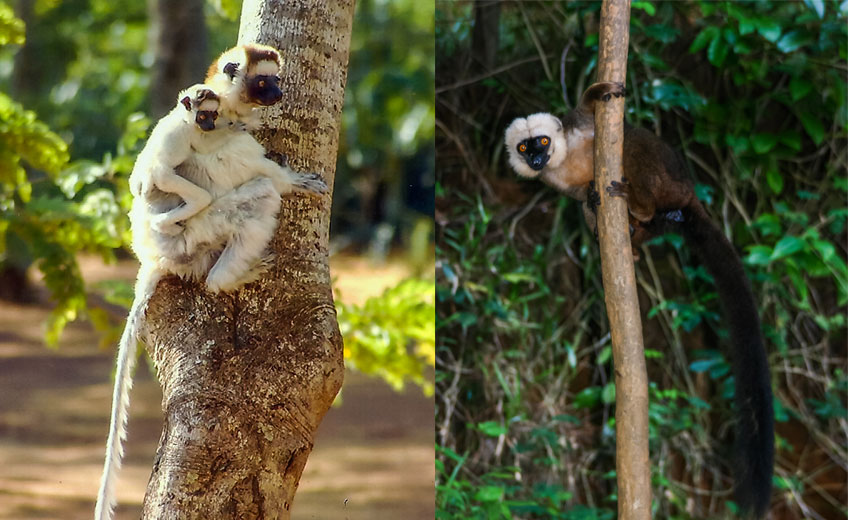Madagascar was once a part of the enormous super-continent called Gond wanaland which about 180 million years ago had broken up into continents and countries we know today as Africa, South America, Antarctica, Australia, and India. Then about 20 million years later Madagascar and India began to break up from Africa. The separation was finally completed about 90 million years ago when India became a part of the mainland Asia while Madagascar was located in its present position in the Indian Ocean about 500 kilometers from the east coast of Africa.
The most well-known endemic mammal of Madagascar are lemurs which are primates. Of the 103 lemur species and subspecies found in Madagascar, the latest assessment of IUCN (International Union on Conservation of Nature) in 2012 has revealed that 91% are threatened with extinction, with 23 species are becoming critically endangered, 52 endangered, 19 vulnerable, and 2 near-threatened, in comparison to the 2005 assessment which listed 63% of 71 lemur species as threatened species being critically endangered 11 species, endangered 16 species, vulnerable 18 species, and the remainders were mostly near threatened.
The largest lemur of Madagascar and also of the world is indri, having a head-and-body length of about 68 cm and weight between 6 to 9 kg. Indri, a critically endangered species, can be found mostly in the forest of Andasibe National Park. Indri’s most impressive characteristic is a loud, wailing territorial call during the morning hours which can be heard across the forest for several kilometers. Andasibe National Park is also a habitat of black-and-white ruffed lemur and red ruffed lemur which are also listed as critically endangered species.
One morning I and my local guide followed the call of indri deeper into the forest and sighted four full-grown indris feeding on leaves high up in a group of tall trees. The indris began to move away among trees while we trekked up and down several slopes through the forest doggedly following the indris. Thirty minutes later the indris stopped to feed on the new leaves allowing us to observe and photograph their activities.
After Andasibe I returned to Antananarivo, the capital city of Madagascar, and flew south to Tolagnaro then drove to Berenty Private Reserve where a large number of ring-tailed lemur, an endangered species, can be easily seen. Ring-tailed lemur is regarded as the symbol of Madagascar national parks. Berenty is also a home to Verreaux’s sifaka, another endangered species.
My next visit was Ranomafana National Park in the central part of Madagascar where I was rewarded with the discovery of golden bamboo lemur and Milne-Edward’s sifaka both of which are endangered species, red-bellied brown lemur and rufous or brown mouse lemur both of which are vulnerable species. Although I was more interested in spotting lemurs, another wildlife I saw which was worth mentioning was a leaf-tailed gecko which was reputed as being the master of camouflage. The beautiful forest of Ranomafana was pleasant to trek safely in the daytime and also at night when nocturnal animals such as striped civet, brown mouse lemur, leaf-tailed gecko, and tree frog could be sighted.
I ended my last visit to Madagascar at Ivolina Zoological Park near Toamasina, a seaport on the east coast, where I saw two endangered species of lemurs, white-fronted brown lemur and crowned lemur, and also common brown lemur, a near-threatened species. A bonus was the sighting of the rare and critically endangered radiated tortoise of Madagascar.
Madagascar can be reached by Air Madagascar which flies nonstop from Bangkok to Antananarivo where the adventure in the land of wildlife threatened species begins.



















































































































































































































































































































































































































































































































































































































































































































































































































































































































